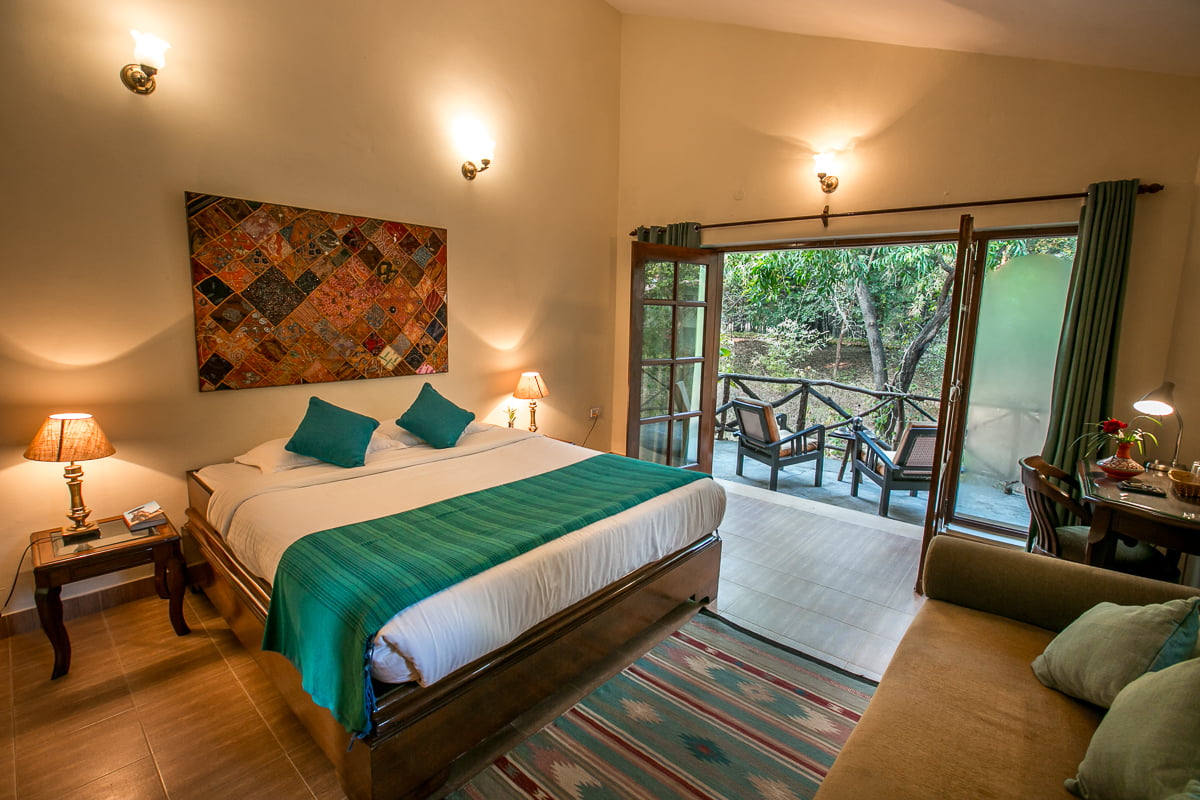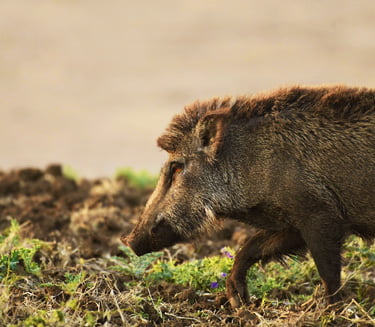14 spacious cosy and comfortable independent Cottages, and 4 rooms in one separate villa, to make a total of 18 rooms, all in a typical Indian village theme, some around an inner courtyard. They have modern facilities with single, twin or double bedded rooms, with attached bathroom, (all amenities) shower, running hot and cold water, comfortably furnished, even a hot water bottle at night to keep you warm!




A spacious thatched dining room which serves home cooked Indian food and Continental cuisines becomes the center point of activities like campfire performances, lectures and star gazing.
The lodge has set strong principles of being environmentally friendly and every aspect of its development and operation is sensitively synthesized towards nature conservation. Since it is located close to Bandhavgarh National Park and to the entrance gate, (near Tala village) guests can listen to the sounds of the Jungle right in their backyards! In the morning you wake up to a symphony of bird songs, while at night you can often hear the alarm calls of deer, which alerts you to a tiger on the prowl!
A lot of fruit trees and bushes have been deliberately planted to attract a variety of butterflies, birds, and insects. Due to such close proximity to the Bandhavgarh National Park, Spotted deer, and the Langur Monkey can often be seen in and around the Lodge.

It’s 50 years since Kailash Sankhala took the helm at India’s Project Tiger - and his family wildlife lodge is still doing a roaring trade, finds Tamara Hinson. MTEN minutes into a stroll along Bandhavgarh National Park’s boundary when I start questioning my keenness to see the wildlife. My companion is naturalist Simranjit, whose stories amuse and terrify in equal parts. He chuckles when he realises I mistook the flimsy fence for some kind of barrier.

Alarm calls from monkeys grew increasingly shrill, the shrieks of peacocks ever louder. The jungle was on red alert. Such animal warnings about predators are just what you want to hear if you’re searching for a big cat in India: in this drum roll of agitation, our 4x4 rounded a corner and came to an abrupt halt. In front of us, a tiger had stepped out of the undergrowth.

Poner Singh is a stubborn man. When India’s National Tiger Conservation Authority (NTCA) invited him to swap his hand-to-mouth existence in the teak forests of the Satpura Tiger Reserve for a free house and five acres of farmland on the outside, the father of two declined.

Sankhala is certain I’ll see a tiger. He tells me this as we bump along the dirt roads of Bandhavgarh National Park, India’s tiger country – 1,540km2 of swaying grassland and tropical forest where the mighty Bengal tiger roams freely.

Tamara Hinson heads to Bandhavgarh National Park, one of India’s best conservation success stories, in search of big cats.

From the moment I enter Bandhavgarh National Park, it’s clear the wildlife is never far away.









